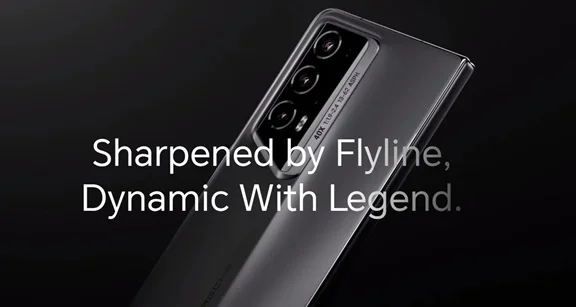In the ever-evolving world of technology, smartphones have become an essential part of our daily lives. Recently, foldable phone have emerged as a new trend, offering unique features that set them apart from traditional smartphones. This blog aims to compare foldable phones with traditional smartphones by exploring their design, durability, performance, and cost, helping you decide which type of phone best suits your needs.
What Are the Key Differences Between Foldable and Traditional Phones?
Understanding the differences between foldable and traditional smartphones is essential, as each has distinct design and usability features. By examining how they’re built, we can see what makes foldable phones so innovative compared to standard models.
Design and Display Features
Foldable phones, like the HONOR Magic V2, feature a flexible OLED or AMOLED screen that can be folded without damage. This innovative design allows the device to function both as a smartphone and a tablet. Traditional smartphones, on the other hand, come with a rigid screen that doesn’t fold. Foldable phones offer various form factors, such as flip-style, which opens like a traditional flip phone to reveal a full screen, and book-style, which opens like a book to provide a larger display, ideal for multitasking and viewing content.
Hardware and Software Capabilities
Foldable phones often boast the latest hardware and software advancements. For example, the HONOR Magic V2 includes high-performance processors, large batteries, multi-camera systems, and advanced software features designed for multitasking and productivity. Traditional smartphones also come with powerful processors and software capabilities, but they lack the dual-purpose functionality and flexibility of a foldable screen.
How Do Foldable Phones Compare in Terms of Durability?
Durability is a significant consideration for any smartphone user. Both foldable and traditional smartphones are built to last, but their durability features differ due to unique designs and materials used in each type.
Build Quality and Resistance to Wear
Foldable phones are engineered with lightweight yet durable materials. HONOR’s use of aerospace-grade titanium alloy for the hinge mechanism provides excellent durability while keeping the device light. Traditional smartphones are generally built with toughened glass and metals, making them robust but with fewer moving parts, they might be less prone to mechanical issues compared to foldable phones’ hinges.
Screen Flexibility and Protection
Foldable screens are designed to withstand continuous folding and unfolding without losing integrity. For example, HONOR integrates advanced protective layers and technologies like the nanoscale crystal shield to enhance screen wear resistance significantly. Traditional smartphone screens, being non-flexible, usually come with strong, scratch-resistant glass such as Gorilla Glass, which offers high resilience to common forms of wear and tear.
Performance: Which Type Suits Different User Needs?
When choosing a smartphone, performance is often a top priority. Both foldable and traditional phones have strengths in different areas, particularly when it comes to battery life, gaming, and multitasking capabilities.
Battery Life and Charging Speed
Foldable phones like the HONOR Magic V2 feature innovative battery technologies, such as silicon-carbon batteries, which provide extended battery life and faster charging speeds. Traditional smartphones also offer long battery life and quick charging, but the technological advancements in foldable phones’ batteries often give them an edge in performance and efficiency.
Gaming and Multitasking Capabilities
Foldable phones excel in gaming and multitasking due to their larger, flexible displays and powerful hardware. The expansive screen space enhances gaming visuals and allows users to run multiple apps simultaneously with ease. Traditional smartphones with high-end specifications also perform well in gaming and multitasking, but their smaller screens can limit the user experience compared to foldable phones’ versatility.
Are Foldable Phones Worth the Higher Price?
With foldable phones often costing significantly more than traditional smartphones, it’s essential to consider whether the added features justify the higher price. Here, we’ll weigh the cost against the benefits to help you decide.
Pricing and Value for Money
Foldable phones are typically more expensive than traditional smartphones due to their cutting-edge technology and innovative design. However, they offer a unique blend of functionality, combining the convenience of a smartphone with the large display of a tablet. Traditional smartphones are generally more affordable and offer excellent value, especially for users who don’t require the advanced features of foldable phones.
Future-Proofing and Investment Value
Investing in a foldable phone could be seen as future-proofing due to the pace of technological advancements. As more apps and services become optimized for foldable screens, these devices might offer a better user experience over time. Traditional smartphones, while still advancing, may not offer the same level of future-readiness. However, for users looking for reliability and cost-effectiveness, traditional smartphones remain a solid investment.
Conclusion
Foldable phones and traditional smartphones each have their strengths and weaknesses. Foldable phones offer innovative features, flexibility, and advanced multitasking capabilities at a higher price point, while traditional smartphones provide durability, proven performance, and affordability. Your decision should be based on your specific needs and budget. If you value cutting-edge technology and are willing to invest in it, a foldable phone might be the right choice. If you prefer a tried-and-true device with robust performance and lower cost, a traditional smartphone will suit you well.
If you find this article helpful, click here for more.









